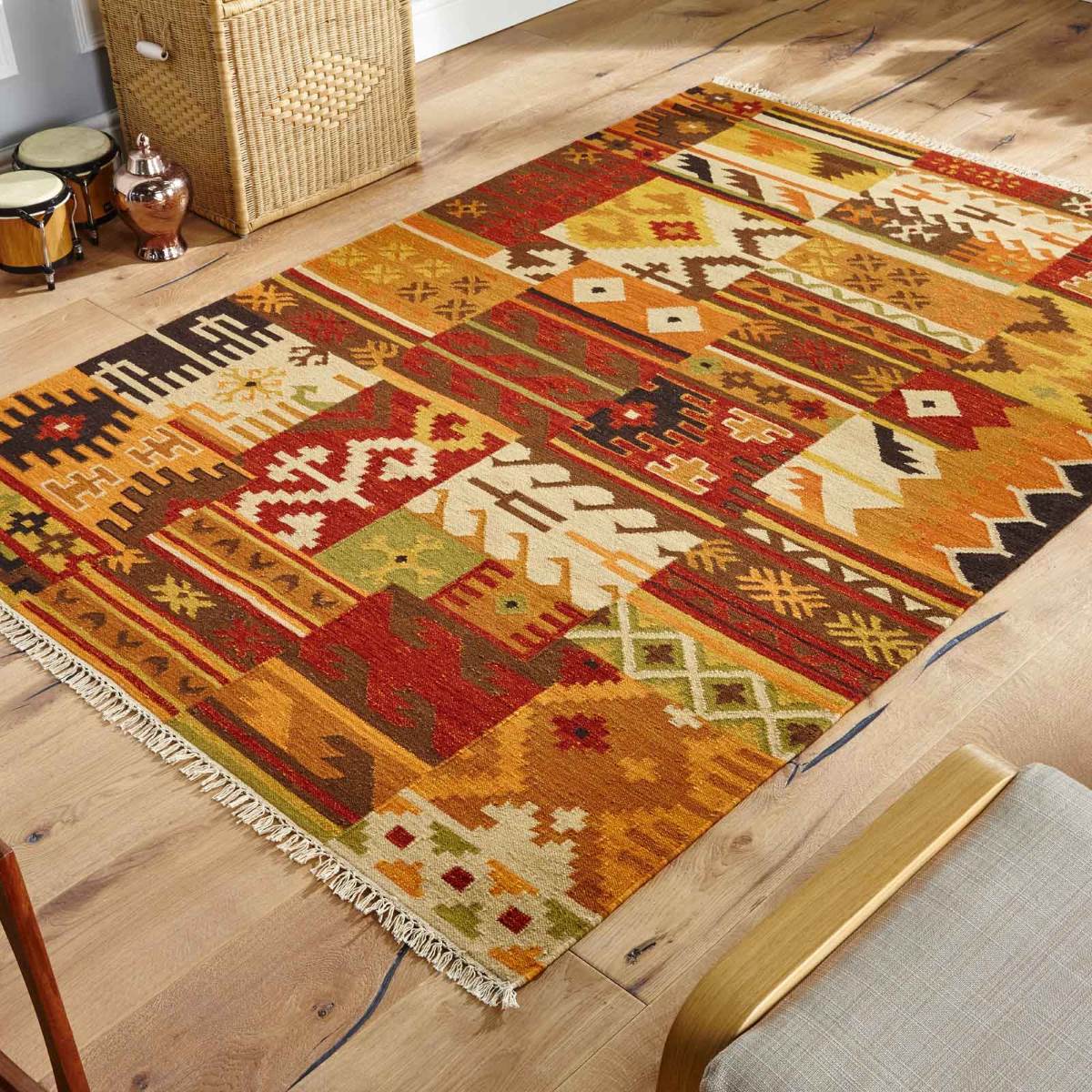

Articles
What Are Kilim Rugs Made Of
Modified: April 22, 2024
Discover the beautiful world of kilim rugs as we explore what these unique pieces are made of. Read our articles to unravel the secrets behind the craftsmanship and materials used.
(Many of the links in this article redirect to a specific reviewed product. Your purchase of these products through affiliate links helps to generate commission for Storables.com, at no extra cost. Learn more)
Introduction
Kilim rugs are beloved worldwide for their exquisite beauty and cultural significance. These hand-woven textiles have a rich history that spans thousands of years and are deeply rooted in the cultural traditions of various regions across the world. They are renowned for their vibrant colors, intricate patterns, and exceptional durability.
When it comes to the materials used in the creation of kilim rugs, there is a wide variety to explore. From natural fibers like wool, silk, and cotton to synthetic materials, each material brings its unique qualities to the finished piece. Understanding the different materials used in kilim rugs can help us appreciate the craftsmanship behind these incredible creations.
In this article, we will delve into the diverse range of materials that make up kilim rugs. We will explore both traditional materials that have been used for centuries and newer innovations that have emerged in contemporary rug-making. Whether you are a rug enthusiast, a history buff, or simply curious about the world of textiles, come join us on this journey to unravel the mysteries of kilim rug materials.
Key Takeaways:
- Kilim rugs, steeped in history and cultural significance, are crafted from a diverse range of materials including wool, silk, cotton, and jute. Understanding these materials enhances appreciation for the artistry and functionality of these timeless textiles.
- Modern innovations in kilim rug materials, such as the use of recycled fibers and advanced synthetic materials, offer enhanced durability, ease of maintenance, and expanded design possibilities. The future holds endless potential for innovative blends and eco-friendly alternatives in kilim rug weaving.
Read more: What Are Turkish Rugs Made Of
History of Kilim Rugs
The history of kilim rugs dates back thousands of years, with origins in several regions including the Middle East, Central Asia, and North Africa. These beautifully crafted textiles were not just practical items for everyday use, but also held deep cultural and symbolic meaning.
The techniques used in kilim rug weaving have been passed down through generations, with each region adding its unique style and motifs to the art form. Kilims were traditionally woven by nomadic tribes as they traveled, using hand-spun yarn and natural dyes from plants and minerals found in their surroundings. The rugs served as both a practical flooring material and a form of self-expression for the weavers.
Over the centuries, kilim rugs became highly sought after and were often used as dowry items or prestige possessions. They adorned the tents and homes of wealthy individuals and were also exchanged as valuable gifts between families. The intricate designs and patterns woven into kilim rugs often carried symbolic meanings, representing fertility, protection from evil, or even conveying stories and myths of the weaver’s culture.
During the Ottoman Empire, kilim rugs reached new heights of popularity, with the imperial court commissioning elaborate pieces for palaces and mosques. The Ottomans introduced new techniques and designs, incorporating various geometric patterns and floral motifs into their kilims.
With the advent of industrialization, the traditional craft of kilim rug weaving faced challenges as machine-made carpets flooded the market. However, the appreciation for the art form persevered, and today, kilims are not only treasured by collectors and interior designers but also celebrated for their cultural significance.
The history of kilim rugs is a testament to the skill and creativity of the artisans who dedicated their lives to mastering this ancient craft. The legacy of kilim rug weaving continues to thrive, with contemporary weavers incorporating traditional techniques while also embracing modern influences and materials.
Traditional Materials Used in Kilim Rugs
Kilim rugs are known for their exceptional quality and craftsmanship, which is partly due to the careful selection of materials used in their creation. Traditional kilim rugs are primarily made from natural fibers that are durable, versatile, and showcase the beautiful colors and intricate patterns that define these textiles.
One of the most commonly used materials in traditional kilim rugs is wool. Wool provides excellent insulation, making kilims warm and cozy. It is also highly resilient, allowing the rugs to withstand heavy foot traffic. The wool used in kilim rugs is often sourced from sheep or goats, depending on the region and the desired texture. The fibers are carefully cleaned, spun, and dyed before being woven into rugs.
Silk is another prized material used in kilim rugs. Known for its lustrous appearance and smooth texture, silk adds a touch of luxury to these textiles. Silk kilim rugs are highly valued for their fine detailing and vibrant colors. Due to the delicate nature of silk, these rugs are often used in low-traffic areas or displayed as decorative pieces.
Cotton is a versatile and widely available material used in kilim rug weaving. It is often used as a foundation or backing material for kilims as it provides stability and structure. Cotton is also used as weft threads, which are woven across the width of the rug, holding the design together. This material creates a strong and durable foundation for the wool or silk fibers to be woven on top.
Jute, a natural fiber derived from the jute plant, is sometimes used in kilim rugs. This material adds a rustic and textured look to the rugs, creating a unique aesthetic. Jute fibers are often mixed with wool or cotton to add strength and enhance durability.
The use of natural materials in kilim rugs not only contributes to their durability but also adds to their eco-friendliness. Natural fibers are biodegradable and have low environmental impact compared to synthetic materials.
The selection of materials for kilim rugs is crucial, as different fibers bring their unique characteristics to the finished piece. Whether it’s the warmth and resilience of wool, the luxury and sheen of silk, or the versatility of cotton, each material contributes to the overall beauty and functionality of traditional kilim rugs.
Wool Kilim Rugs
Wool kilim rugs are among the most popular and widely recognized types of kilims. Wool is a natural fiber known for its durability, softness, and ability to hold vibrant colors, making it an ideal material for kilim rug weaving.
The wool used in kilim rugs is typically sourced from sheep or goats, depending on the region and the desired texture. The fibers are carefully cleaned, spun, and dyed before being woven into rugs. The quality of the wool plays a significant role in the final product, with finer and softer wool fibers creating a more luxurious feel.
One of the primary benefits of wool kilim rugs is their exceptional durability. The natural resilience and strength of wool make these rugs capable of withstanding heavy foot traffic and everyday use. This makes them a popular choice for high-traffic areas such as living rooms, hallways, and entryways.
Wool also possesses excellent insulating properties, making wool kilim rugs warm and cozy underfoot. They provide insulation during cold seasons, helping to retain heat in the room. Additionally, wool is naturally flame-resistant, which adds to its safety features.
Another distinguishing feature of wool kilim rugs is their ability to hold colors vibrantly. Wool fibers readily absorb dye, resulting in rugs with rich and vibrant hues. This characteristic allows weavers to create intricate patterns and designs that stand out and catch the eye. Over time, the natural lanolin present in wool fibers can enhance the rug’s sheen and softness while providing some protection against stains and spills.
Wool kilim rugs are available in a wide range of designs, from traditional geometric patterns to intricate floral motifs. Each region and culture has its distinctive style, and the choice of pattern and color reflects the weaver’s artistic expression and cultural heritage.
When it comes to caring for wool kilim rugs, regular vacuuming and occasional professional cleaning are recommended. It is essential to address spills or stains promptly by blotting the area gently to prevent them from setting into the fibers.
With their durability, warmth, vibrant colors, and intricate designs, wool kilim rugs continue to be cherished and sought-after pieces of artistry and craftsmanship. They add a touch of elegance and cultural richness to any space, whether it be a traditional or modern interior.
Silk Kilim Rugs
Silk kilim rugs are highly regarded for their exquisite beauty, luxurious feel, and fine detailing. Silk, a natural protein fiber derived from silkworm cocoons, adds a touch of elegance and refinement to these stunning textiles.
The use of silk in kilim rug weaving dates back centuries and has been associated with royalty and nobility. Silk fibers are known for their lustrous appearance, smooth texture, and ability to reflect light, making them highly prized for creating intricate patterns and designs.
Silk kilim rugs are often handcrafted using traditional weaving techniques, with each knot meticulously tied by skilled artisans. The fine detailing and delicate motifs woven into these rugs showcase the precision and artistry of the weavers.
One of the most remarkable attributes of silk kilim rugs is their vibrant and long-lasting colors. Silk fibers readily absorb dyes, resulting in rugs with intense hues and exceptional color retention. The combination of silk’s smooth surface and the vibrant dye creates a luminous effect that elevates the overall aesthetic of the rug.
Due to the delicate nature of silk, silk kilim rugs are often used as decorative pieces or displayed in low-traffic areas. They add a touch of elegance to living rooms, bedrooms, or formal spaces. The luxurious feel of silk underfoot adds a sense of indulgence and sophistication to any interior.
It’s important to note that silk kilim rugs require special care to maintain their beauty and longevity. Regular vacuuming with a brushless attachment and avoiding direct sunlight can help preserve the luster and color of the silk fibers. Professional cleaning is recommended to ensure proper maintenance and handling of silk kilims.
Silk kilim rugs are available in a wide range of designs, from traditional geometric patterns to intricate floral motifs. Each rug is a unique work of art, with the design and color palette reflecting the cultural heritage and artistic expression of the weaver.
With their unrivaled beauty, fine craftsmanship, and luxurious feel, silk kilim rugs are treasured pieces that can transform any space into a statement of elegance and sophistication. Whether displayed on the floor or hung on the wall, silk kilims are a testament to the timeless allure of this exquisite material.
Read more: What Are Ruggable Rugs Made Of
Cotton Kilim Rugs
Cotton kilim rugs offer a blend of affordability, versatility, and durability, making them a popular choice in both traditional and contemporary interiors. Cotton, a natural fiber derived from the cotton plant, brings several advantages to kilim rug weaving.
One of the primary uses of cotton in kilim rugs is as a foundation or backing material. Cotton provides stability and structure to the rugs, allowing them to maintain their shape and withstand regular use. The strong and durable nature of cotton fibers makes cotton kilim rugs suitable for high-traffic areas such as living rooms, dining rooms, or entryways.
In addition to its supportive role as a foundation, cotton is also used as weft threads in kilim rug weaving. Weft threads are woven across the width of the rug, holding the design together. Cotton’s versatility allows it to be easily dyed, making it an ideal choice for creating vibrant and colorful patterns in kilims.
Cotton kilim rugs have a lighter weight compared to wool or silk rugs, which makes them easier to move and clean. The breathable nature of cotton also allows for better airflow, making these rugs suitable for warmer climates.
Another advantage of cotton kilim rugs is their easy maintenance. Cotton fibers are typically stain-resistant and can be spot cleaned with mild detergent and water. Regular vacuuming helps keep the rug free from dust and debris, ensuring its longevity and appearance.
Despite being a more affordable option compared to silk or wool, cotton kilim rugs offer a wide range of designs and patterns to choose from. From bold geometric motifs to intricate floral patterns, cotton kilims can complement various interior styles, from bohemian to modern minimalism.
One aspect to consider with cotton kilim rugs is their potential to shrink when exposed to moisture. It’s important to avoid excessive water or humidity, and when washing is necessary, it’s recommended to follow the manufacturer’s guidelines or seek professional cleaning services.
Cotton kilim rugs are a versatile and practical choice for those seeking a balance between affordability and durability. They bring a touch of comfort, style, and charm to any space, whether it be a cozy living room or a contemporary office.
Kilim rugs are traditionally made of wool, but can also be made of cotton or silk. Look for rugs made of natural materials for durability and authenticity.
Jute Kilim Rugs
Jute kilim rugs offer a unique and rustic aesthetic that adds a touch of natural charm to any space. Jute, a natural fiber derived from the jute plant, is known for its coarse texture, durability, and eco-friendliness. These qualities make jute a popular choice for kilim rug weaving.
One of the defining features of jute kilim rugs is their distinct textured appearance. Jute fibers have a rough and natural look that adds a rustic and earthy element to the rug. This characteristic makes jute kilims particularly suitable for spaces with a bohemian, coastal, or farmhouse-inspired style.
Jute is a versatile material that is often blended with other fibers such as wool or cotton to enhance its strength and durability. The combination of jute and another fiber creates a more robust foundation for the kilim rug, ensuring its longevity and ability to withstand regular foot traffic.
In terms of sustainability, jute kilim rugs are an eco-friendly choice. Jute plants are fast-growing and require minimal pesticides or fertilizers to thrive. Additionally, jute is a biodegradable material, making it a more environmentally conscious option compared to synthetic fibers.
Jute kilim rugs offer natural insulating properties, providing warmth and comfort underfoot. The fibers trap air, providing a layer of insulation that helps regulate floor temperature and reduce energy consumption. This makes jute kilims a suitable choice for colder climates.
When it comes to maintenance, jute kilim rugs require a little extra care compared to other materials. Jute is susceptible to moisture, so it’s important to avoid excessive water or dampness. Spot cleaning with a mild detergent and water is recommended for small stains or spills. It’s also advisable to avoid placing jute kilim rugs in high-humidity areas like bathrooms.
With their natural and rustic appearance, jute kilim rugs add warmth, texture, and a touch of earthiness to various interiors. Whether used in a living room, bedroom, or entryway, jute kilims bring a sense of natural beauty that complements both modern and traditional design styles.
Embrace the raw and organic qualities of jute kilim rugs to create a cozy and inviting atmosphere in your home, while also appreciating their eco-friendly attributes.
Synthetic Materials Used in Kilim Rugs
In addition to the traditional natural fibers, synthetic materials have gained popularity in kilim rug weaving. Synthetic fibers provide various benefits such as enhanced durability, affordability, and easy maintenance. These materials offer an alternative for those seeking kilim rugs with specific characteristics and budget considerations.
One of the most commonly used synthetic fibers in kilim rugs is polypropylene. Polypropylene rugs are known for their exceptional durability and resistance to stains, fading, and moisture. These rugs are suitable for high-traffic areas where frequent cleaning or exposure to spills is likely. Polypropylene kilim rugs also tend to be more affordable compared to rugs made from natural fibers.
Nylon is another synthetic material used in kilim rug production. Nylon fibers are known for their strength, resilience, and fade resistance. Nylon kilim rugs are highly durable and can maintain their appearance even with heavy foot traffic. Additionally, nylon has excellent color retention, allowing for vibrant and long-lasting designs in kilims.
Polyester is another popular choice for synthetic kilim rugs. Polyester fibers are known for their softness, excellent color retention, and stain resistance. Polyester kilim rugs can offer a similar look and feel to natural fibers while providing added durability and affordability. They are also resistant to fading, making them a suitable choice for areas exposed to direct sunlight.
Acrylic is a synthetic material often used as an alternative to wool in kilim rugs. Acrylic fibers can mimic the look and texture of wool while being more affordable and resistant to fading. Acrylic kilim rugs are a practical choice for those seeking the aesthetic appeal of wool without the higher price tag.
The use of synthetic materials in kilim rugs is not limited to single fibers. Blended materials, such as a combination of wool and synthetic fibers, are also popular. Blended kilim rugs offer the best of both worlds, combining the natural beauty and texture of wool with the added durability and affordability of synthetic fibers.
It’s important to note that while synthetic materials offer benefits such as durability and affordability, they may lack the same level of sustainability and eco-friendliness as natural fibers. Synthetic fibers are not biodegradable and are derived from petrochemicals.
Whether made from natural or synthetic fibers, kilim rugs continue to captivate with their beauty and artistry. The choice between natural and synthetic materials ultimately comes down to personal preference, budget considerations, and the specific qualities you seek in a kilim rug.
Blended Kilim Rugs
Blended kilim rugs offer a unique combination of natural and synthetic fibers, combining the best qualities of each material to create a harmonious and durable rug. These rugs are crafted using a blend of different fibers, such as wool, cotton, silk, and synthetic materials like polypropylene or polyester.
The blending of fibers allows for a range of benefits. For example, by blending wool with synthetic fibers, such as polypropylene or polyester, the resulting kilim rug becomes more resistant to stains, fading, and moisture. This makes blended kilim rugs an excellent choice for high-traffic areas or households with pets or children.
Blended kilim rugs also offer enhanced durability. The addition of synthetic fibers to natural fibers like wool or silk strengthens the rug’s structure, making it more resilient and able to withstand heavy foot traffic. This durability ensures that blended kilim rugs can be enjoyed for years to come.
Another advantage of blended kilim rugs is that they can provide a more affordable alternative to rugs made solely of natural fibers. Blending natural fibers with synthetic materials helps reduce costs without compromising the overall quality and aesthetic appeal of the rug. This makes blended kilim rugs a cost-effective choice for those with a specific budget in mind.
Blended kilim rugs often feature a variety of textures, patterns, and colors, thanks to the diverse mix of fibers used. The natural fibers provide a soft and luxurious feel, while synthetic fibers can enhance the rug’s durability and vibrant appearance. The combination of different fibers in blended kilim rugs opens up endless design possibilities, allowing for unique and eye-catching creations.
When it comes to maintenance, blended kilim rugs are relatively easy to care for. Regular vacuuming and spot cleaning with mild detergent and water are usually sufficient to keep the rug clean and in good condition. However, it’s always best to follow the manufacturer’s care instructions to ensure proper maintenance and longevity.
The versatility, durability, and affordability of blended kilim rugs make them a popular choice for homeowners and interior designers alike. Whether you prefer the natural beauty of wool or silk combined with the practicality of synthetic fibers, a blended kilim rug can be the perfect addition to any room, adding style, comfort, and durability to your space.
Read more: What Are Oriental Rugs Made Of
Modern Innovations in Kilim Rug Materials
As the world of textiles continues to evolve, modern innovations in kilim rug materials have emerged, introducing new possibilities and expanding the range of options available to rug enthusiasts. These innovations combine traditional craftsmanship with technological advancements to create rugs that offer enhanced durability, ease of maintenance, and even eco-friendly alternatives.
One such innovation is the use of recycled materials in kilim rugs. With a growing focus on sustainability and reducing waste, rug makers have started incorporating recycled fibers, such as repurposed cotton or synthetic materials, into the weaving process. This not only reduces the environmental impact but also adds a unique and eco-conscious element to the rug.
In addition to recycled materials, kilim rugs now feature synthetic fibers that mimic the look and feel of natural materials. For example, advanced technology has allowed for the development of synthetic materials that closely resemble the texture and appearance of wool or silk. These synthetic fibers offer the advantage of being more affordable and often more resistant to stains and fading, while still providing the desired aesthetic qualities of natural fibers.
Furthermore, modern kilim rugs may incorporate moisture-wicking and stain-resistant properties. Various treatments and coatings can be applied to the fibers, making the rug more resistant to spills, stains, and water damage. This innovation provides added convenience and ease of maintenance for busy households or commercial settings.
Another innovation seen in kilim rug materials is the use of blended fibers at a more advanced level. Blending different fibers, such as wool with synthetic materials or silk with natural plant-based fibers, allows for improved durability, texture, and overall performance of the rug. These blended fibers can offer a unique combination of qualities, making the rug more versatile and suited to specific needs and preferences.
Furthermore, digital printing technology has revolutionized the world of kilim rugs, offering greater design flexibility and customization options. This technology allows intricate and detailed patterns to be reproduced with precision, offering a wider array of design choices for kilim rug enthusiasts. Digital printing opens up avenues for creating personalized and one-of-a-kind kilim rugs that suit individual styles and preferences.
With modern innovations in kilim rug materials, rug makers are able to push the boundaries of creativity and cater to the diverse needs and tastes of customers. The use of recycled materials, advancements in synthetic fiber technology, stain-resistant treatments, and digital printing all contribute to the evolution of kilim rug materials, bringing contemporary designs and enhanced functionalities to these timeless textiles.
As the world continues to embrace new technologies and sustainable practices, we can expect further innovations in kilim rug materials, offering even more options for those who appreciate the beauty, craftsmanship, and versatility of these captivating rugs.
Conclusion
Kilim rugs have captured the hearts of people worldwide for centuries, with their vibrant colors, intricate patterns, and cultural significance. Understanding the materials used in kilim rug weaving not only deepens our appreciation for the craftsmanship behind these textiles but also helps us make informed choices when it comes to selecting the perfect rug for our spaces.
In this article, we explored the history of kilim rugs, tracing their origins to various regions across the globe. We learned about the traditional materials used in kilim rugs, such as wool, silk, cotton, and jute, and how they contribute to the durability, warmth, and visual appeal of these rugs.
We also ventured into the realm of synthetic materials used in kilim rugs, understanding the benefits they offer in terms of affordability, durability, and ease of maintenance. Blended kilim rugs, which combine natural and synthetic fibers, emerged as a popular choice, providing a harmonious balance of qualities.
Furthermore, we delved into modern innovations in kilim rug materials, exploring how recycled fibers, synthetic materials that mimic natural fibers, stain-resistant treatments, and digital printing have brought new possibilities to the world of kilim rugs.
In conclusion, kilim rugs are more than just floor coverings; they are intricate works of artistry and cultural heritage. The materials used in kilim rug weaving play a significant role in the beauty, durability, and functionality of these textiles. Whether you prefer the timeless elegance of natural fibers like wool or silk or the practicality and affordability of synthetic materials, there is a kilim rug out there that perfectly suits your preferences and style.
As we continue to embrace technological advancements and sustainable practices, we can expect the evolution of kilim rug materials to continue. The future holds endless possibilities for innovative blends, eco-friendly alternatives, and even more personalized and customizable options.
So, whether you’re looking to add a touch of tradition to your home or a contemporary statement piece to your office, kilim rugs will continue to enchant and inspire with their remarkable beauty and timeless appeal.
Frequently Asked Questions about What Are Kilim Rugs Made Of
Was this page helpful?
At Storables.com, we guarantee accurate and reliable information. Our content, validated by Expert Board Contributors, is crafted following stringent Editorial Policies. We're committed to providing you with well-researched, expert-backed insights for all your informational needs.
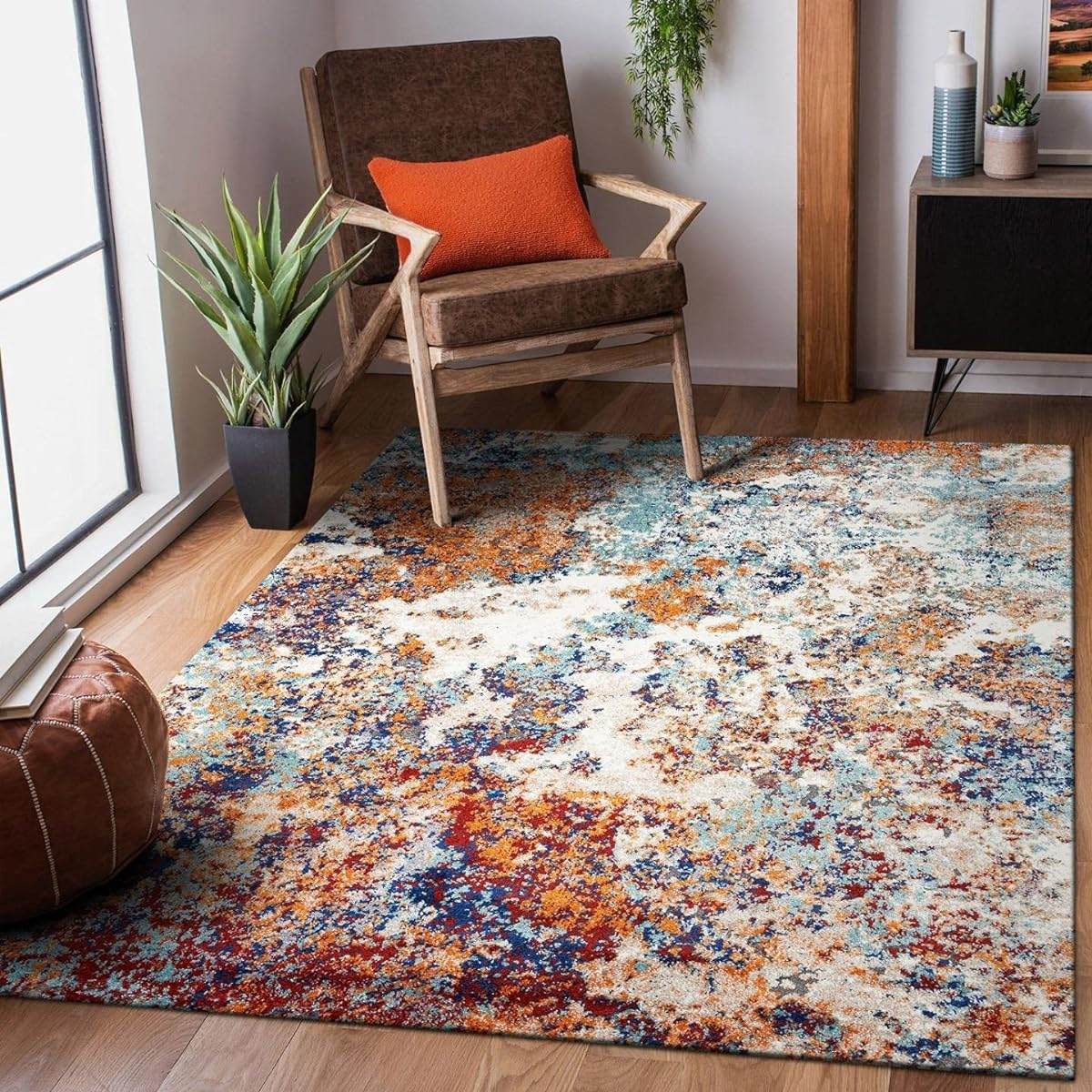
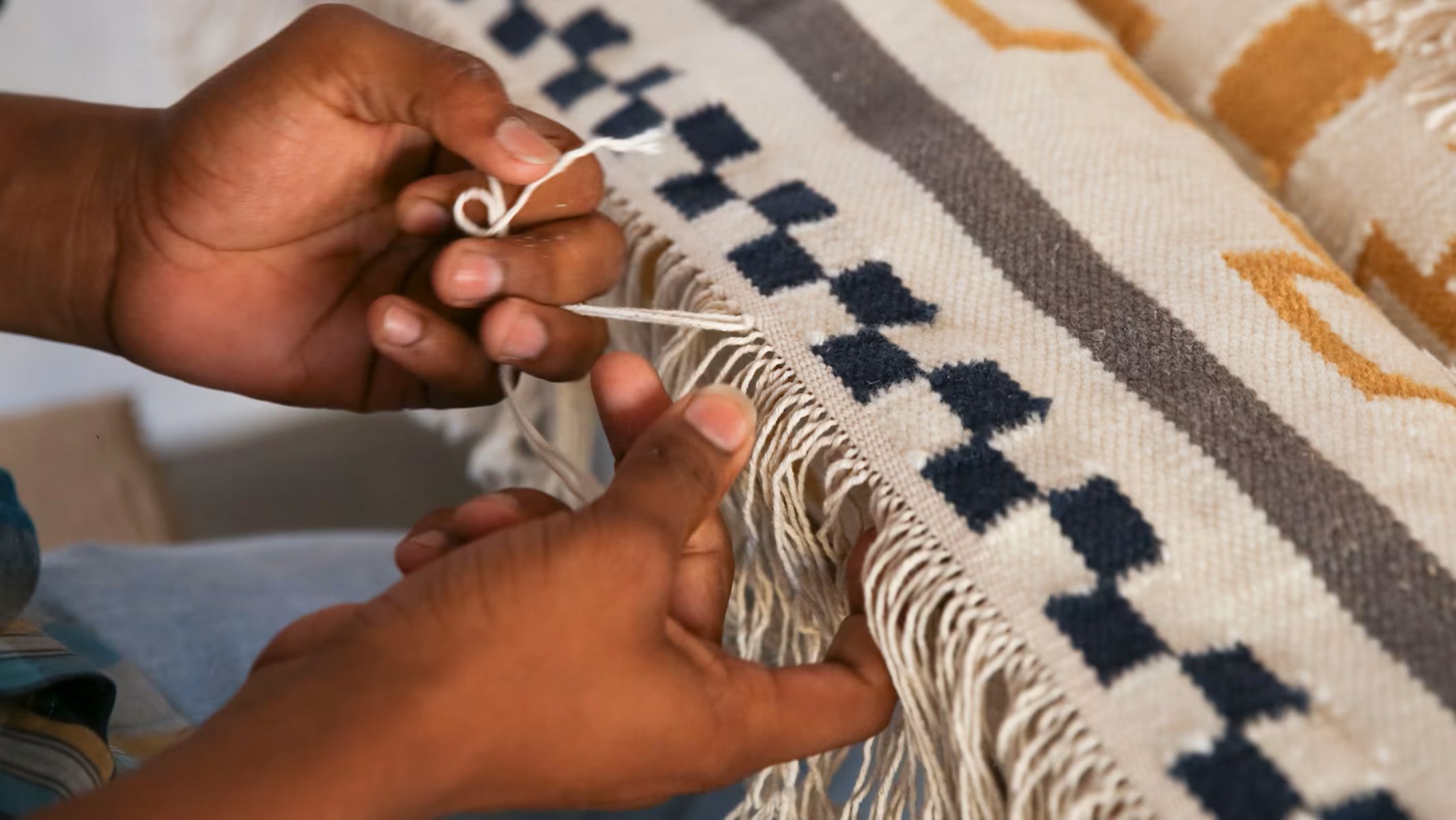
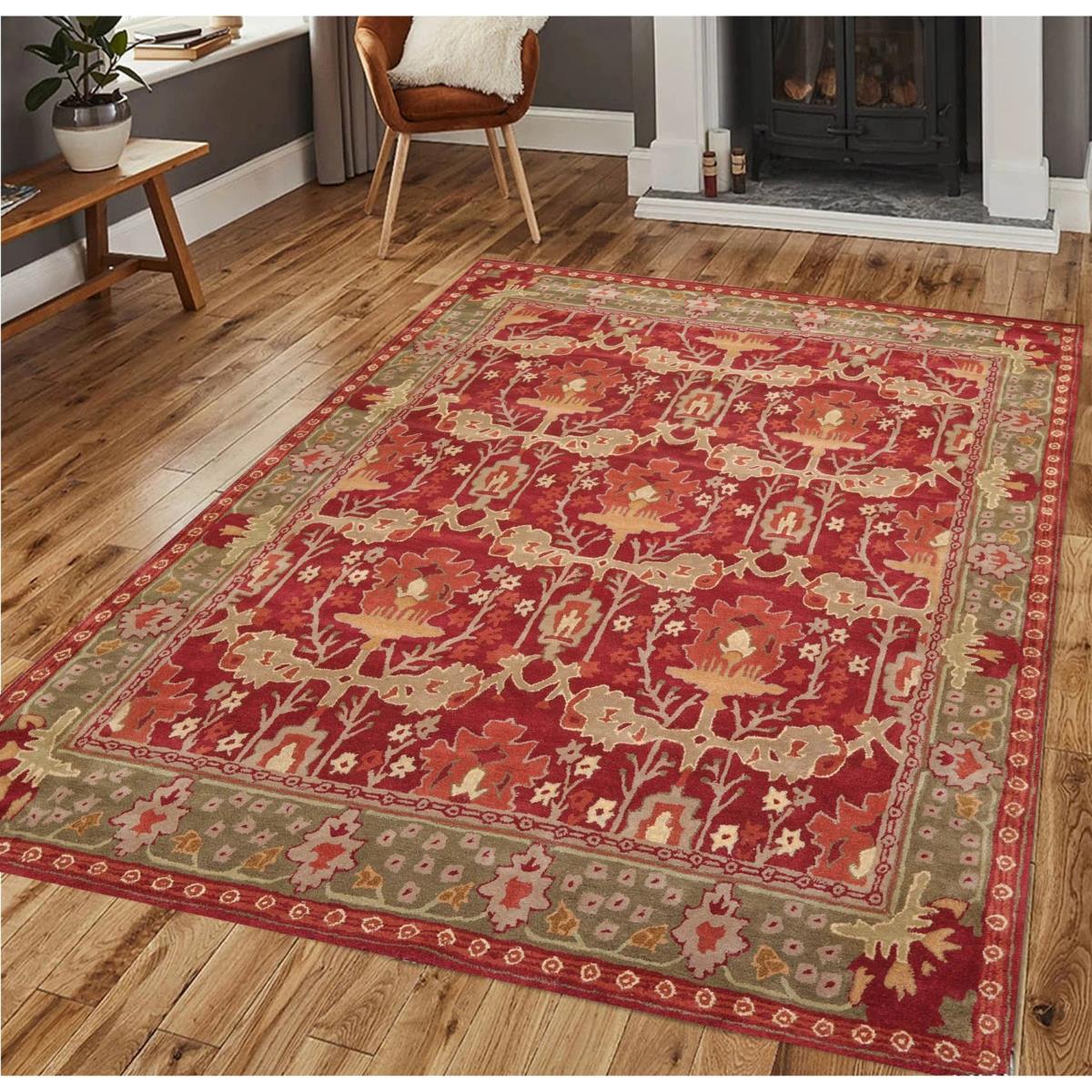
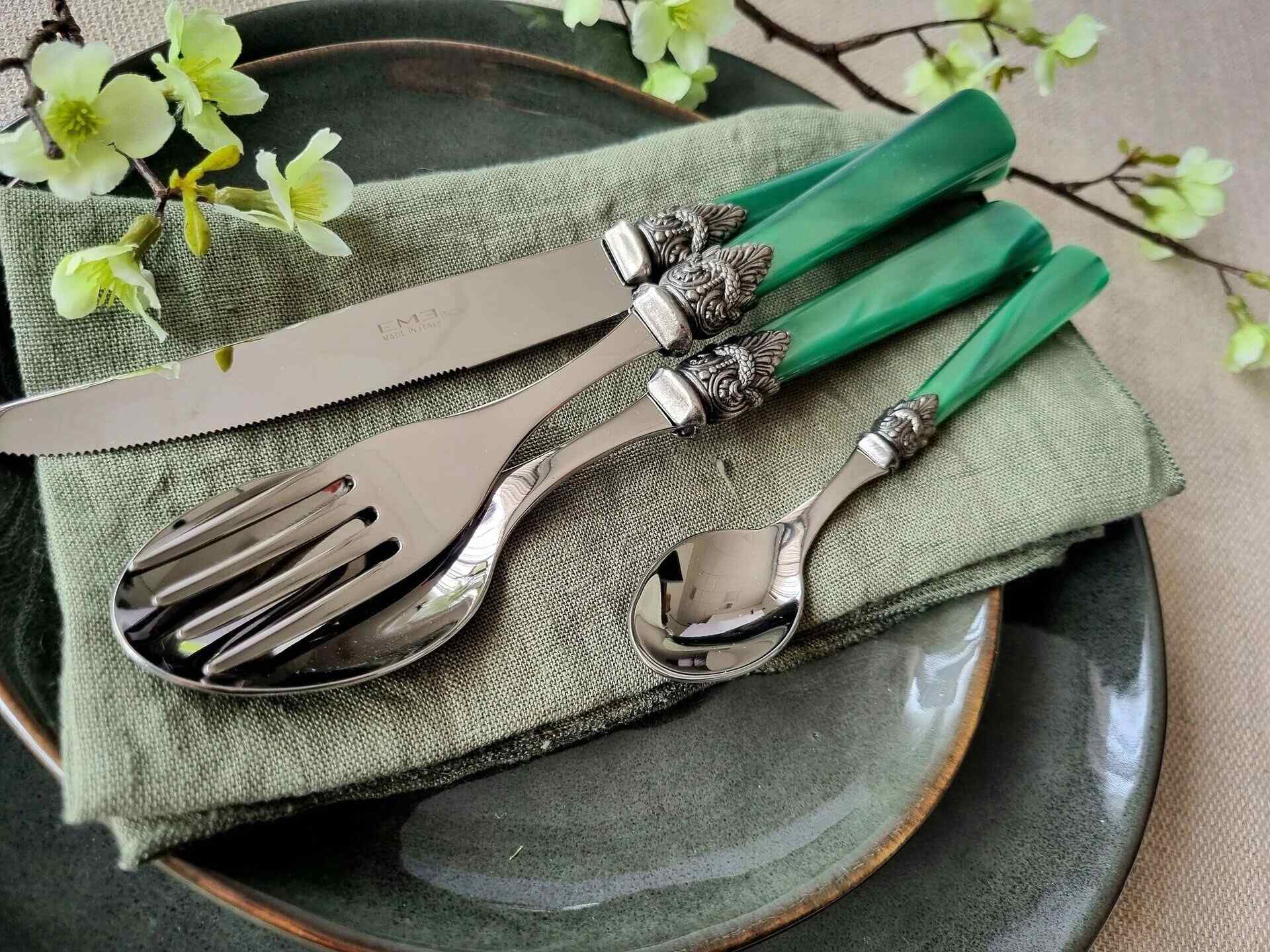





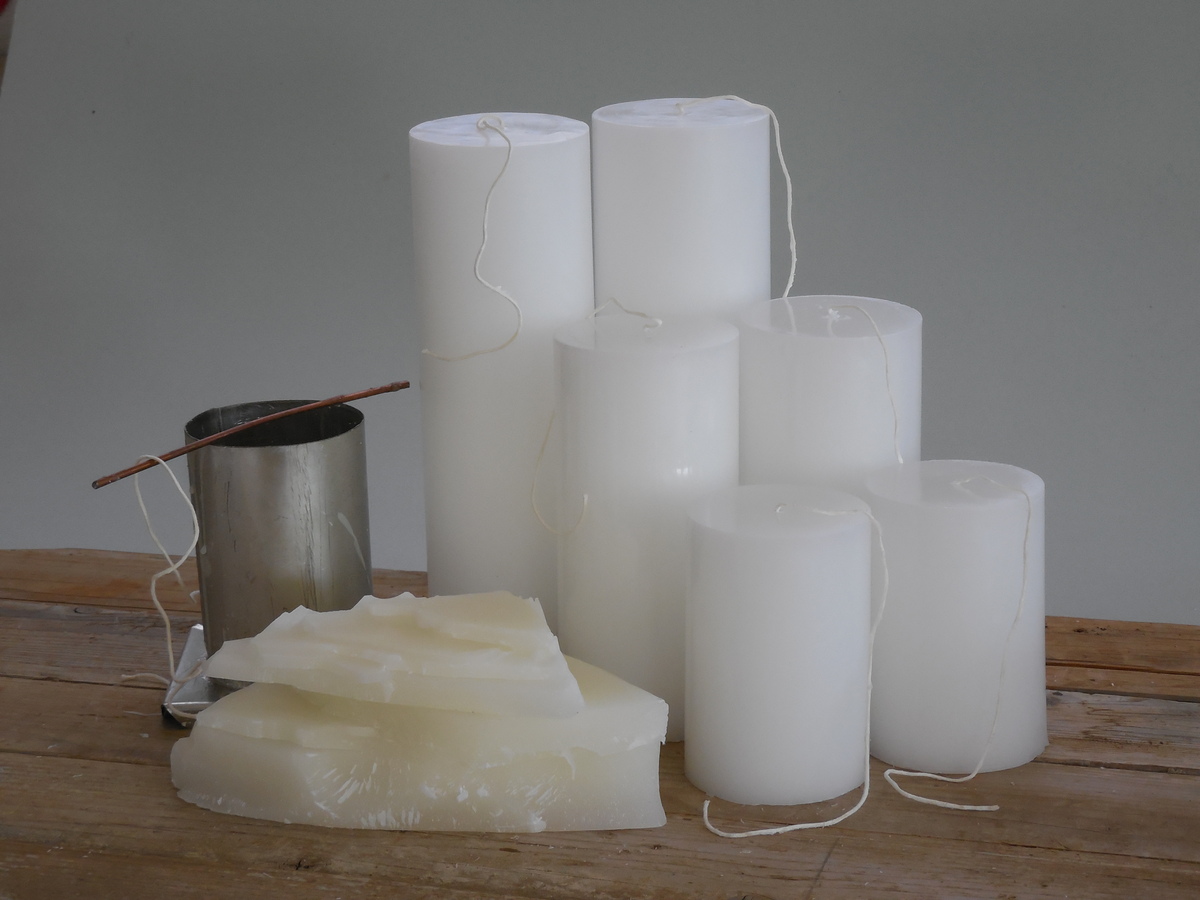

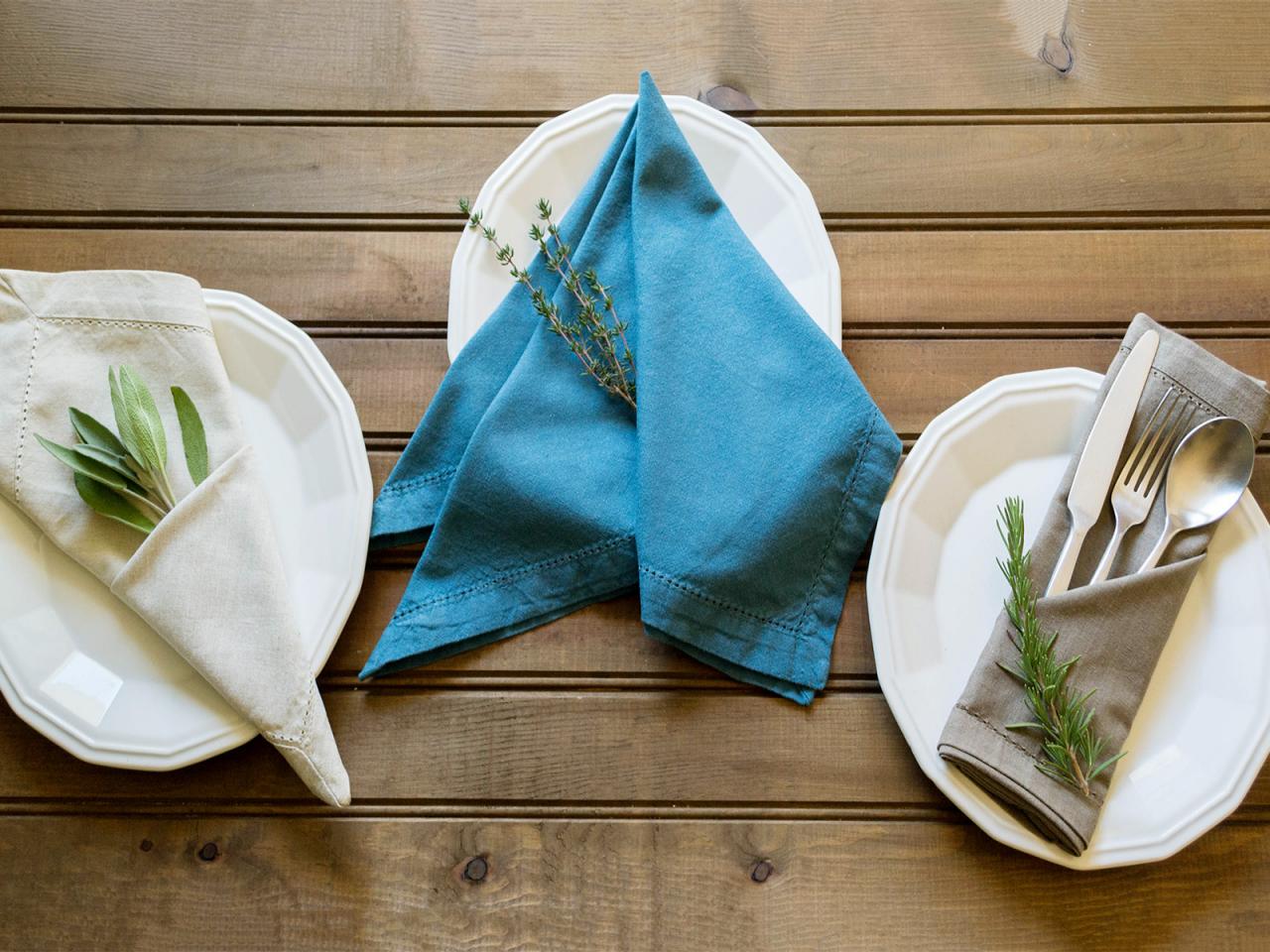


0 thoughts on “What Are Kilim Rugs Made Of”